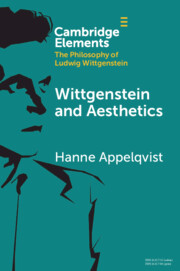Element contents
Wittgenstein and Aesthetics
Published online by Cambridge University Press: 17 February 2023
Summary
- Type
- Element
- Information
- Online ISBN: 9781108946452Publisher: Cambridge University PressPrint publication: 09 March 2023
References
Primary Sources
Secondary Sources
- 7
- Cited by

